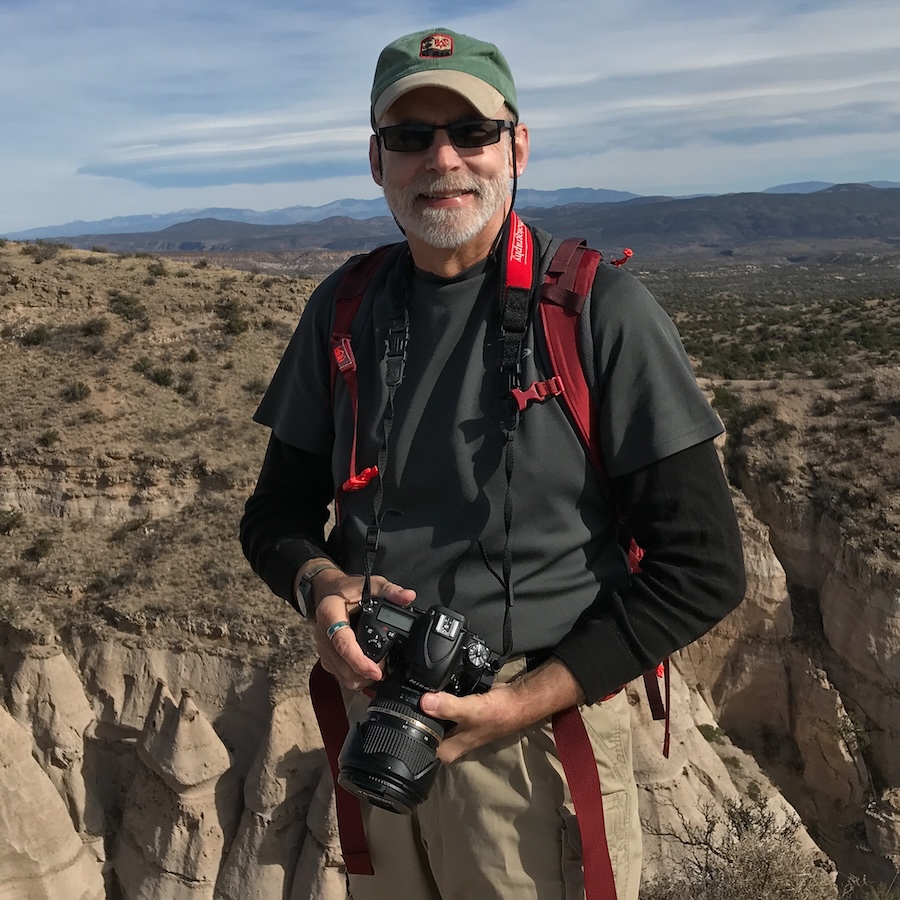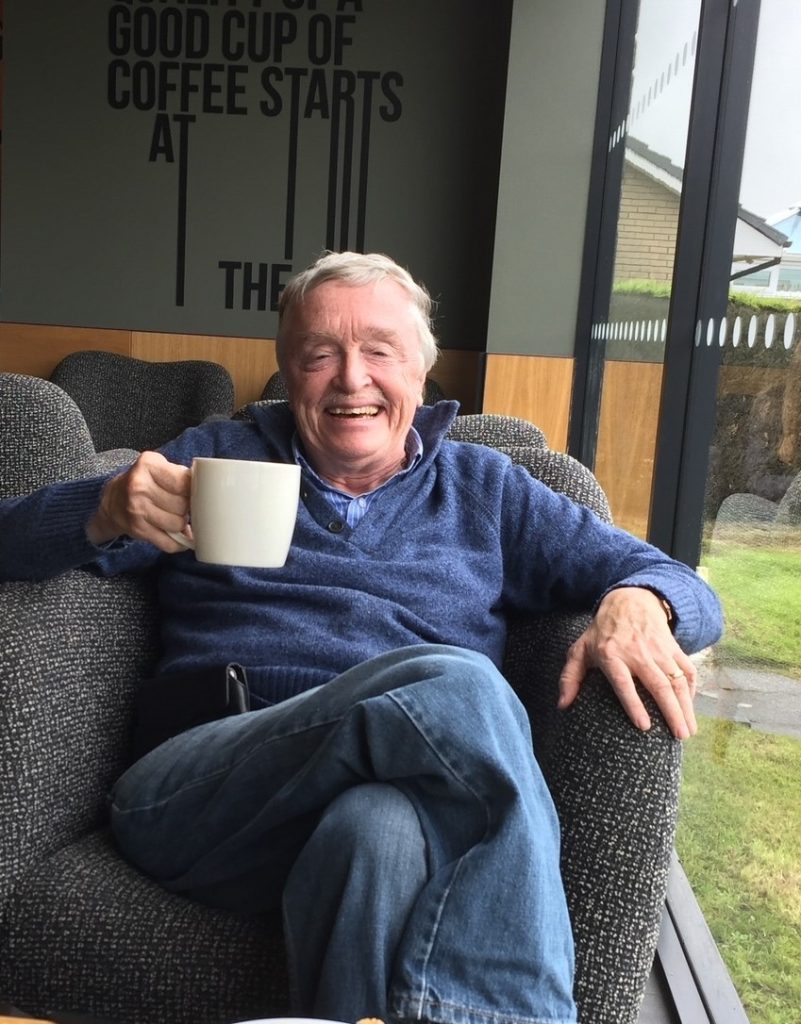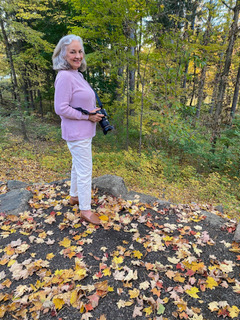Frank Gallagher
I blame my dad.
When I was a child, my dad had a Graflex Speed Graphic 4×5 camera and the mechanics of operating that beast fascinated me. He also had a Leica IIIc 35mm camera that I learned how to use as a teenager. Maybe you could say photography was in my blood.
For many years photography took a back seat to life and career. I was a sixth grade math teacher. Then I spent 25 years at a foundation focused on educational media and technology, the last five as executive director. That and serving on several boards involved a lot of travel. I eased back into photography by taking my camera on business trips and staying a few extra days to explore, go hiking, camp for a couple of days, and take a lot of mediocre photos.
I wanted to get better and, like anyone who wants to improve their photography, figured I should join a camera club and take classes or workshops. Both would be great opportunities to learn photography, connect with others who share my hobby, and just have fun. So I did, joining the Silver Spring Camera Club in the 2000s and taking classes and field workshops with Rocky Mountain School of Photography. There were tons of inspiration in presentations, valuable insights from competitions and critiques, camaraderie with fellow photographers, and admiration for how they saw the world.
Then I met my wife and, once again, photography took a back seat for a bit. We enjoy travel (Italy and the US Southwest are favorite destinations), cooking, and going out to museums and theaters with friends.
Since retiring from foundation work, I’ve been able to get back into photography (again), rejoining the club in 2017 (?), getting active in the North American Nature Photography Association (NANPA), and eventually managing NANPA’s marketing and communications. I have a small photography business working with nonprofit organizations and co-lead an occasional workshop.
I’m in my second year as Programs Chair, which involves booking speakers and judges, and have met some really interesting people in the process. I would urge every club member to consider getting involved, whether volunteering for a committee or taking a leadership role. You’ll get a lot out of it … and so will the club!
Phil Boyer
Phillip Boyer is a recently retired labor and employment lawyer, teacher, Father (never retired), nature lover, amateur historian, political activist, and itinerant traveler. He has traveled widely; in addition to Europe, Canada, and much of the US, he traveled as an Army Instructor to Army bases in unusual places, where he was rarely arrested while seeking the perfect shot. He has also been an avid Red Sox fan for 57 years and has photographed baseball at the little league, high school, and professional level.
During high school, he caught the photography bug and learned the basics while pursuing youthful dreams. Active photography took the back burner during the child rearing years, but he has revitalized his passion in the past ten years after joining this club.
Both before and after parenthood, his photography has mirrored his passions—nature, travel, and baseball, and in his youth, politics. In the seven years after college, he traveled both in the US and abroad, shooting unusual scenes and weird subjects; while at home he shot political events and baseball. His only regrets are that he lacked then the photographic skills he has now, and lacks now the physical skills he had then.
As a club member, he has migrated to digital, and has greatly increased his skill and composition under the tutelage of club members. He is slowly learning Lightroom and hopes to master it by his next decade. His photographic interests have expanded greatly as a club member/field trip leader, to include architecture, reflections, angles, and, inspired by Bruce Schaeffer, old stuff. However, his primary focus remains nature, travel, and baseball. While traveling he looks for shots that reflect history, local life and culture, and scenes reflecting both local and universal themes, His favorite travel images include a hen party at the Brandenburg gate, French cowboys, street scenes in small towns, and the natural beauty of Northern England.
Karen Comstock
After earning several post graduate degrees, teaching elementary school, being a stay-at-home mom, practicing social work, and teaching social psychology at a college, I retired and recognized I was burned out. Once I slowed down and took time for myself, I felt the creative impulse beating within me. I was the little girl who put food coloring in her father’s shaving cream to watch it turn beautiful colors and always had glue, glitter, and crayons within reach. An artistic creative impulse was always there, but a busy adult life led me to overlook it. I took photographs of my children when they were growing up with those old Kodak throw away cameras, and to my surprise the process must have resonated with me because I chose photography as a creative path to pursue after retirement.
I took a few courses and workshops from Wesley Bernard who taught photography at a local community college in the Hudson Valley (Wesley presently teaches at SUNY Oneonta in upstate NY). Wesley was a very important part of my photographic journey because he taught me the basics, but more importantly he guided me toward the goal of listening to my own inner artist and to produce photographs that are an authentic expression of my feelings about the subject. I initially photographed many kinds of subjects, but I later recognized that scenes in nature resonated with me on a deeper level. I came to the realization that the inspiration I found in nature was due to the influences of my family of origin.
My father loved the outdoors. He fished, cross-country skied, played golf, and occasionally hunted deer. I only remember my father coming home with a large buck once. I knew as a child that hunting deer for my father was more about the walk in the woods than the actual hunt. Nature was my father’s refuge to help him relieve the stresses of the day. When my father would pick up a paint brush and dabble with oil paints on canvas, he almost always painted a landscape. My father taught me to appreciate the natural world and the health promoting properties that nature provides.
My father’s father found passion in growing roses during his retirement years. All winter my grandfather would read about growing roses and would make plans for his rose garden. Spring, summer, and fall he tilled and toiled in the soil. He once told me that he got great joy from digging in the dirt. The result was a variety of spectacularly beautiful roses grown alongside a long white fence. My grandfather showed me what a passionate hobby looks like and the great pleasure a simple rose could bring.
My mother’s mother loved growing flowers and vegetables. My grandmother dedicated flower beds she grew in her yard to her grandchildren. I have fond memories of her cooking, pickling, and freezing produce that I helped her pick from her garden. She helped me to understand how deeply connected we are to nature.
Summer vacations during my childhood consisted of hikes up trails along the banks of waterfalls, picnics, walks on the beach, and swimming. I learned to swim in the fresh water that pooled at the bottom of waterfalls, the refreshing waters of the natural lakes of upstate New York, and the warm, salty Atlantic Ocean near the shores of North Carolina. I lived most of my life in beautiful regions of New York State (Cayuga Lake, Lake Ontario, and the Hudson Valley). All of these experiences fostered my love for photographing landscapes, intimate landscapes, flowers, and other close-ups of nature. Several of my nature photographs were exhibited at the Education Center at Teatown Lake Reservation, The Westchester County Center, and The Art Gallery at Westchester Community College.
My developing aesthetic was influenced by those who introduced me to the joys and wonders of nature and showed me how a creative path can be found even in one’s own backyard. Consequently, I don’t have the need to travel the world for inspiration (although I do travel from time to time). I agree with others that photography is an art form. It is something we do to explore and express something deeply personal. If others like my photographs that is great, but it is not what compels me to pick up my camera. Nature connects me to the influences of my past and it is the scenes of nature that ignites a strong emotional response within me. My goal is to produce photographs of real encounters with mother nature and to express my work as a unique reflection of who I am.
I believe the goal of learning to express one’s authentic self in one’s photographs is difficult in today’s culture of competition. As photographer Guy Tal states, contests are “unimportant and distracting” to creative self expression. I recognize this is my perspective, and others may have valid perspectives different from mine. To paraphrase and quote photographer David duChemin, competitions by design compare one’s work to others, and “nudges” one to listen to the voices of others instead of “satisfying one’s own internal muse.“ In the long run, this can lead to creative ruts, mediocracy, dampen the joy of doing photography, and even damage egos.
Having said that, I did enter the International Garden Photographer of the Year contest during the pandemic. I had created an overlay from a wildflower photograph and applied it in photoshop over a dahlia photograph. I was exploring ways to express my vision of flowers in a garden. It was a whimsical photograph, and was chosen to be on the short list out of hundreds of entries for the sub-category, The Beauty of Plants. What exactly did the judges judge me on? Was it the craft of doing an overlay or how expressive it was as art? Or was it something unconscious within themselves? As David duChemin points out, craft can be measured and evaluated because it is “guided by a set of rules (exposure, sharpness, etc.),” but “art is purely subjective.” As duChemin explains, what competitions cannot do is to tell me if my photograph is good art, or if my work is better than others, or if it is a genuine reflection of who I am. My only conclusion is that this particular photograph resonated in some way with these particular judges, and perhaps it would not have with another set of judges.
As Wesley taught me, photography is a personal endeavor and If I trust my intuition as a developing artist my work will continue to improve. By doing work deeply meaningful to me, expressing how I experience my subject with honesty, by taking risks through exploration, and by not measuring my work against the standards or artistic tastes of others, my work will more likely be an authentic expression of who I am. This is my challenge. Easy it is not, but ultimately, I do photography because it enlivens my soul, and if by chance one of my photographs inspires another to appreciate nature as I was taught then that would be an added bonus. I look forward to learning from The Silver Spring Camera Club’s exceptional photographers, as well as from the club’s terrific speakers who present new ideas and skills, and to go on some of the interesting upcoming field trips the club has planned.



